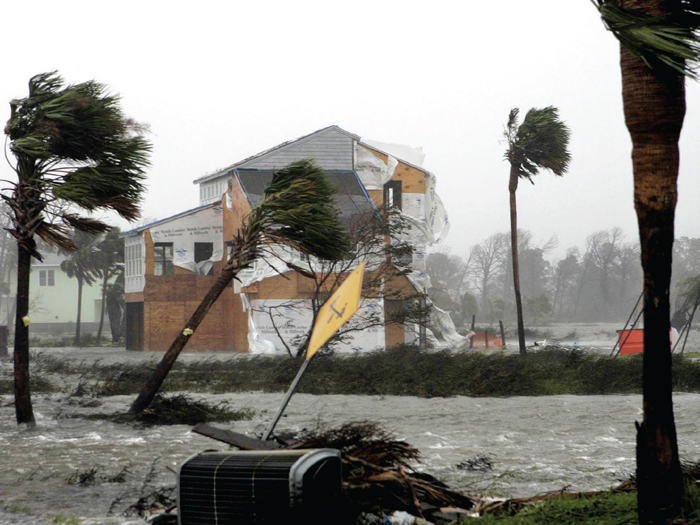5 Tech Tools that Can Help During Hurricane Season

Death and taxes may be life’s only two actual inevitabilities if you go by the old adage, but for risk managers and insurance claim professionals, hurricane season represents another sure thing.
It isn’t “if,” it’s “when and how many?”
For 2019, the National Oceanic and Atmospheric Administration (NOAA) predicts a 40% chance of a “near-normal” storm scenario.
Spanning June 1 to November 30, the official hurricane season, according to NOAA, will offer a range of 9 to 15 named storms, of which 4 to 8 could become hurricanes (winds of 74 mph or higher), and 2 to 4 major hurricanes (category 3, 4 or 5, with winds of 111 mph or higher).
The irony here is the certainty of hurricanes is laced with uncertainty, as even NOAA, with its potent technology and federal government resources, can offer only a 70% confidence rate.
Technology today can go a long way in helping to manage the storm season, according to Jamie Yoder, president of Chicago-based Snapsheet, a virtual insurance claim service. With a solid tech tool kit and strategy, Yoder explained, risk management and claims professionals can better get ahead of expected storm-driven losses.
Yoder gives five technology-based strategies that can help in dealing with hurricanes and their aftermath:
1) Texting
A simple, yet highly effective communications tool, basic texting, Yoder said, offers a tremendous problem-solver for managing pre-storm safety strategies and post-event claims scenarios.

Jamie Yoder, president, Snapsheet
“As one of the most valuable technologies, texting delivers strong communications potential with a much smaller, inexpensive tech footprint than anything comparable,” he said.
Texting gives users the ability to provide meaningful information to affected parties very quickly. For example, texting can inform people where to find safe shelter when a serious storm approaches, or it can help claims pros and risk managers stay in touch with insureds who suffering from storm-related losses.
“It can be invaluable,” Yoder said.
2) Open data
Yoder said that while open data isn’t a technology per se, its availability is becoming increasingly powerful in dealing with pre-storm preparedness and post-storm damage.
“Claims firms continue to get better about gathering all types of information, and open data can be crowdsourced and applied in a contextual, meaningful and useful form,” he said.
Yoder added that 2017’s Hurricane Harvey drove advances with open data, and the idea kept making inroads during 2018 hurricane season as well.
“Open data is getting much more sophisticated, more operational heading into 2019,” he said, citing the Department of Homeland Security’s technology unit as one body that is using open data to offer layers of information with “actionable platforms” (including simulations).
For example, shared open data can be utilized to predict storm surge estimates several days in advance of an event.
3) Simulation/visualization
Analytics driven by more open, available data can give risk managers and claims professionals the ability to visualize and store claim estimates, while understanding implications for future storms.
Yoder said storm-related data can be overlaid much like law enforcement does with crime data. In this case, it would be data such as lightning strikes, for instance, which can serve as a yardstick for a given hurricane system.
“That can allow you to actually see what it means for an effective response, what things may be in harm’s way, whether there is coverage and so on,” he said, adding that data provided by today’s sophisticated satellites and drones also are emerging as a potent weapon in predicting and managing hurricane damage outcomes. And that can lead to more effective preventive measures.
4) Imaging
With smart phones now pretty much ubiquitous, risk managers and claims pros are equipped with highly sophisticated, very compact photo and video tools right in their pockets.
Yoder said the “feet on the street” pros – and by extension, claimants – can benefit from smartphone technology by, for example, using photo- and video-based adjusting to ensure that insureds’ lives (or businesses) are restored in as little time as possible.
“Smartphones today offer a great way to handle the huge workloads that follow major storms,” Yoder said. “In the field, even tablets are no longer necessary, much less laptops.”
5) Digital payment
Estimating and paying claims quickly and fairly gets much deserved attention in the industry, but Yoder said that, particularly with personal lines claims, digital payments are an emerging technology that offers a positive outcome to a post-hurricane loss situation.
“This is about getting people back on their feet as fast as possible and digital payments can do that,” Yoder said. He added that even by using the typical, but not instantaneous, electronic automated clearing house system (rather than services such as Venmo, Paypal, etc.), claims can be resolved much more quickly.
“Right now, it’s still a challenge for our industry, but it shouldn’t be,” Yoder said. “I expect to see more and more claims paid digitally during 2019 and beyond.” &










